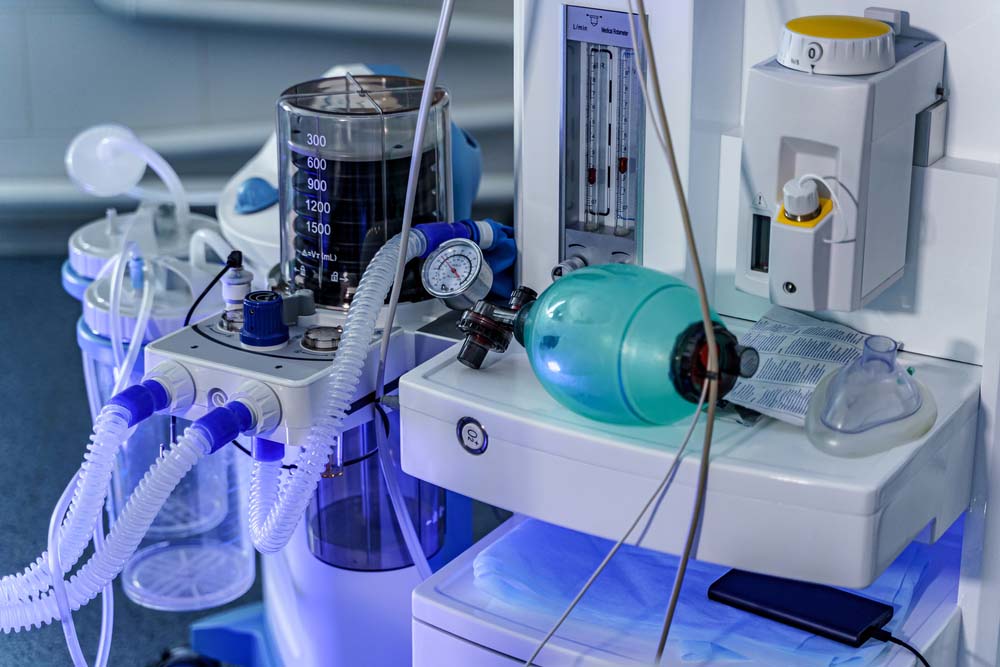Anesthesiology and Reanimation

Basically, anesthesia means numbness. The main goal is to prevent the pain that will occur in order to perform the surgical operation. Although the numbness provided by anesthesia seems to be the main goal in order to have the surgery, there are parameters that enable to maintain this basic goal and keep a series of complex and vital functions close to normal values. This is why this branch, which requires intervention in cardiac arrest, which is the worst situation that can occur during surgery and anesthesia, uses the word "Reanimation", which means "reanimation". Anesthesiology and reanimation always requires a multidisciplinary and multimodal approach for anesthesia to be given, from the smallest medical intervention to the largest surgery. Therefore, patients are directed to anesthesiology and reanimation physician for the procedure to be performed under anesthesia by any medical doctor.
Before surgery
Every patient who will undergo a medical procedure goes to the anesthesiologist before the operation and is examined. The American Society of Anesthesiologists (ASA) has set standards for safe and accurate anesthesia at every stage. In accordance with these standards, your anesthesiologist receives some blood tests, ECG, lung x-rays and some information about your medical history, such as your age, additional disease, medications you use, and if you have an allergen, and consults additional tests or other necessary medical doctors to evaluate your condition for surgery. If you are using drugs such as blood thinners (anticoagulants), the consultation of the relevant branch tells you that you should use other drugs for cutting and bridging treatment. As a result of the examination, the most appropriate anesthesia technique and the anesthetic drug administration method to be given are determined for you to perform the procedure. If your condition and surgery are high-risk for anesthesia, your anesthesiologist will arrange an intensive care unit for close follow-up and treatment before and after the operation. You will be reminded that you should not eat anything at least 8 hours before the procedure. Finally, as with any medical procedure, anesthesia obtains an informed consent from you.
During surgery
When the patient is taken to the operating room, electrodes are placed on the chest skin. Thus, heartbeats and rhythm are checked on the screen. If your vascular access has not been opened in the service, a vascular access is opened to be able to give anesthetic drugs intravenously. Blood pressure is monitored by a cuff placed on the arm. Thanks to a precision instrument placed on the nail bed, the amount of oxygen in the blood is monitored. Due to the advanced anesthesia devices, the amount of carbon dioxide in the blood can also be measured. During the surgery, the heart rate, rhythm, blood pressure, and the amount of oxygen in the blood are closely monitored by the anesthesiology doctor, and any changes in these parameters can be intervened immediately with drugs. Thus, a safe anesthesia is provided.
After surgery
After the operation, if the patient has received general anesthesia, the patient is awakened and then moved to the recovery unit. Here, the patient's vital functions are constantly monitored and closely monitored until sent to the room in the service. In service follow-ups, your painkiller treatment for pain management related to surgery is also organized and taken care of.
Types of Anesthesia ;
General Anesthesia
Anesthetic drugs are administered intravenously to the patient without any change in vital functions. Temporary loss of consciousness, loss of pain sensation (analgesia), removal of reflexes and immobility are provided. Afterwards, the patient is intubated, and the patient is connected to the breathing device by means of the intubation tube advanced to the trachea. All your vital signs, including the depth of anesthesia, are closely monitored. The duration of general anesthesia can be easily extended according to the duration of the surgery. After the end of the operation, the anesthetic drugs are stopped, and the patient is awakened within a few minutes and taken to the recovery unit.
Sedation-Analgesia Applications
It is a method of intravenous administration of the necessary drugs to relax, calm and relieve the patient's fears. If regional anesthesia is given during the operation, it can be applied to create amnesia in the patient, as well as in minor surgical interventions to be performed with local anesthesia, painless interventions to help the diagnosis, and examination-purpose interventions (MR, Endoscopy, etc.)
Regional (Regional) Anesthesia
The most commonly applied methods are central blocks (epidural, spinal anesthesia, combined spinal epidural anesthesia where both are performed simultaneously) or peripheral blocks (Interscalene, supraclavicular, infraclavicular brachial plexus, axillary, distal nerve, psoas rupture, femoral, sciatic block, etc.). These procedures can be applied depending on the location and type of surgery. The consciousness of the patient does not disappear as in general anesthesia, the patient is aware of everything, but the sense of pain is disappeared. Epidural anesthesia alone is used to provide anesthesia during the operation, as well as to control post-operative pain and prevent pain at birth.
Sub-branches of Anesthesiology and Reanimation
Algology
Algology (Pain science) is the field of medicine that deals with the treatment of persistent, chronic pain that does not respond to classical painkillers and disrupts the patient's comfort of life.
Intensive care
It is a branch of medicine in which critically ill patients are followed for 24 hours, based on a multidisciplinary approach, and vital support is provided by using advanced technologies.

